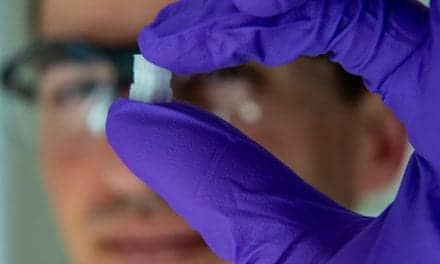A recent study conducted by Utah State University compared land and HydroWorx aquatic treadmill metabolic outcomes in the athletic population. The study suggests that when athletes run on a HydroWorx underwater treadmill with high-powered resistance jets, the jets can be used to simulate and potentially out-perform land treadmill incline physical responses.
A HydroWorx news release reports that the findings indicate athletes who are looking to gain the benefits of cross-training by running underwater, such as lowered incidence of overtraining injuries and improved lean muscle mass, can anticipate a greater return on metabolic rates than they would gain on a land-based treadmill when they continuously increase resistance jet levels.
The study encompassed the responses of 18 participants as they underwent trials on both land-based and HydroWorx aquatic treadmills. The release notes that as speed and incline increased on the land treadmill, so did the participants’ metabolic cost (VO2 max) and heart rate in a predictable, linear fashion.
When the same methods were applied to the aquatic treadmill by increasing the power of the resistance jets, participants’ metabolic cost and heart rate rose by unexpected, cubic amounts. Once the resistance jets were performing at 100% capacity, participants were reportedly exhibiting physical effects that exceeded those they exhibited when running on a land treadmill at a 10% incline.
Dennis G. Dolny, PhD, study author, Utah State University, department head of HPER, states in the release that the new research will help persuade and encourage individuals who may have avoided underwater treadmill workouts, assuming they would be unable to provide enough intensity and return.
Dolny explains a common concern that practitioners may express regarding water versus land treadmills “is that there isn’t an incline to simulate running uphill. With the resistance provided by the HydroWorx water jets, at any given speed, one can simulate the metabolic requirement of running up a 1% incline to in excess of a 10% incline. This added resistance would meet the training requirements of virtually all athletes seeking optimal training conditions, such as high intensity coupled with reduced joint stress.”
Anson Flake, CEO and co-founder of HydroWorx adds in the release “…Dr. Dolyn’s team has been able to scientifically prove what we’ve been hearing since we brought the first HydroWorx unit to the market in the late 1990s. It’s wonderful to be able to put numbers behind the years and years of stories we’ve collected from athletes who have used the HydroWorx to get faster and stronger without risking injury while training or rehabbing from an injury.”
According to the release, the university’s research team is continuing to evaluate the link between physical responses on land-based and aquatic treadmills by conducting addition experimentation among both elite and average athletes.
Source: HydroWorx





